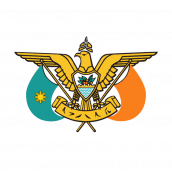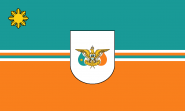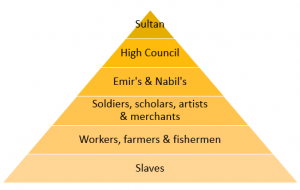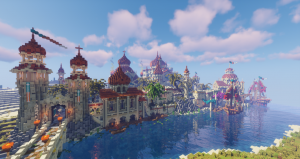The Empire of Anjyarr
Coat of arms
|
Flag
|
| Location | Anjyarr |
| Races | Dark Elves |
| Primary Religions | Pantheon of the Phoenix
The Path |
| Political System | Elective Aristocracy |
| Current Leader | Sultan Sig'vyl Al-Buthara |
| The High Council | Arndil Al-Mansour |
| Preceded by: |
This section is currently under construction. Please be patient!
Introduction
At the mouth of the great Ifriq delta lies the emirate of Al-Khadir, capitol of the great Empire of Anjyarr. It is a paradise of great wealth and prosperity in the midst of an unruly wasteland. Founded by a tribe of nomadic traders, whom settled due to the pleasant climate and geographic location near the Ifriq, Al-Khadir quickly became a trading hub for races all around the world. The city is a gateway to any who wish to enter the Southern world. It offers a large market for all kinds of goods from elven trinkets to dwarven drink, but also a large range of local wares such as tobacco, carpets, coffee, spices and garments!
Geography
The Empire of Anjyarr encompasses the entirety of the Anjyarr desert and the volcanic Jabridian island. In the south the nation’s border is signified by a large mountain range, the southern spine of Eden, which functions as a natural line of defense. On the other side of which lies the neighbouring realm of Valegro. This desert of Anjyarr has little to no mountainous terrain and thus offers no defense from invaders from the east where too the mountain range fails to offer any kind of protection. The empire’s capital Al-Kahdir lies at the estuary of great Ifriq delta, functioning as a trading port and a gateway to the Adan Ocean.
The nation’s second largest city Al-Jabrid is located on the Jabridian island. A tropical island located not far from the Heartlands coast. The Island’s steep elevation from the seafloor make it near impossible to access without the permission of the Jabridians.
Society
Social hierarchy
The foundation of Anjyarr’s society is a very clear social hierarchy which is bound by profession. At the top of this Hierarchy stands the Sultan, followed by government officials such as the high council, the Emir’s and the various Nabils. These groups make up the upper class of Anjyarr’s society. The middle class consist of soldiers, scholars, merchants and artists. These people form the core of Anjyarr's society. They are the intellectuals, the cultural backbone and ultimatly the ones that can be chosen for a position in the high council, should the need for certain successors arise. The lower class consists of workers, farmers and fishermen. They are the driving force behind Anjyarrs economy and all know this very well. Discrimination against those of lower class is therefore next to unknown in Anjyarr. Each citizen of the empire knows that without the participation of other classes, they cannot exist and thrive. There is however an exeption. This being the lowest class in Anjyarr, the slave. Slavery is still practiced in Anjyarr due to the regional climate. Many people struggle with working in the intense heat, which is why slaves are used to do any hard labour in the burning sun. This class mainly consist of foreign prisoners and criminals that have been sold to the empire for punishment. However, even slaves are able to climb up the social hierarchy. When a slave shows he can be trusted and behaves himself well, said slave can buy his freedom and become a member of Anjyarrs lower class.
The use of slaves by the empire has been criticised by many for being inhumane. The peoples of Anjyarr care little for this matter however. They highly value trust, loyalty and unity above all. These values and ideals form the backbone of their society and since most slaves are criminals, they are viewed as traitors to these ideals.
Political structure
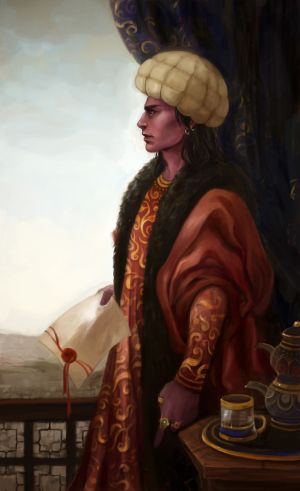
Anjyarr has an elective aristocracy, which means that those with power or riches, or those who are best suited to govern, are placed in charge. These people are known as the high council, a court of representatives. Each member is responsible for representing certain social interests that are vital to Anjyarri society, such as agriculture, architecture, infrastructure, economy and security. Although the members of the court serve merely as advisors to its head, the Sultan, they do have reasonable autonomy when it comes to their own respective fields. Each of them having their own office, scribes and personnel. Council members, once chosen, can stay in office for as long as they are able. A council member can also be relieved of their duties when they are no longer deemed fit by the Sultan and/or other council members.
When a Council member is no longer able to do his job, a replacement can be elected to take his place. These successors hail from the “Middle” class of society, mainly scholars. These people will present themselves in front of the people they may have to represent and with their support will be brought before the High council, who will then choose the successor.
The Sultan is chosen by the members of the high council and often comes from within their ranks. He is the head of state. Once a Sultan is chosen, he can stay in office for an unspecified amount of time. A Sultan can be removed from office either through death or when he is no longer deemed suited for the job by a 3/4th majority of the high-council.
The Empire is divided into various emirates, provinces that are decentralized and can thus govern themselves as long as they follow the law and stay loyal to the Sultan, with whom lies the supreme authority. An example of one of these emirates would be the Emirate of Al-Jabrid.
The central government resides in Al-Khadir, the capitol of the Empire. They primarily concern themselves with wars, criminal proceedings, taxes and large-scale infrastructure projects. They also govern the emirate of Al-Khadir
Culture
Apparel
Despite the many differences between the two races, both the Khadan Humans and the Dark elves have managed to develop a common trend in apparel.
The harsh climate of Anjyarr has made both races favor loose, layered robes and dresses made out of many different materials such as cotton, linen, silk or satin. The wealthy will often be seen wearing clothes accessorized with many different jewels usually made of precious metals such as gold or silver.
The robes and dresses of the Akhadi are usually very colourful and often have accents of gold weaved within the fabric. The only difference between the two races, when it comes to their apparel, is that the elves prefer elegant dark-coloured robes decorated with mostly purple gems and inlaid with silver instead of gold. It is also usual for Akhadis to wear piercings.
While traveling through the desert of Anjyarr the Akhadi are often seen wearing hoods over their heads as protection as well as to hide their identity. On top of that the women are often seen wearing veils covering their face in order to keep the sand out of their face and prevent it from reaching their eyes.
Arts
Anjyarr is home to artisans famious throughout the whole of Eden: musicians, sculpters, painters and many other crafts.
Music
Anjyarri musicians almost always come in pairs: one playing the flute and the other the harp. Together they produce an elegant tone, perfectly suiting for the tropical paradises that are their homes. They perform throughout all of Eden at special occasions such as marriages, balls or other festivities.
Sculpting and painting
The art of sculpting within the lands of Anjyarr has its roots in the old Azari tradition. The same is the case when it comes to painting. Artisans differentiate themselves from others by paying attention to detail to an extreme level. Scuplts and paintings can primarily be found in religious buildings, as well as palaces, castles and public places.
Artisans from both these fields primarily hail from Anjyarr's Azari'Lunn populus.
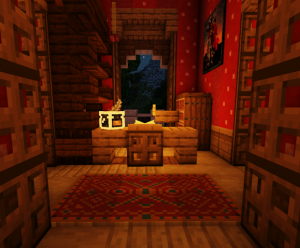
Weaving
Weaving is an essential part of Anjyarri culture and art, primarily the weaving of carpets. the Anjyarri carpet stands out by the variety and elaborateness of its manifold designs. It can be found throughout the whole of Eden in offices, castles and palaces alike.
Anjyarri carpets and rugs of various types are woven in parallel by nomadic tribes, in village and town workshops, and by royal court manufactories alike. As such, they represent miscellaneous, simultaneous lines of tradition, and reflect the history of Anjyarr and its various peoples. The art weaving itself dates back to the time of the Pharaohs and has changed many times throughout the centuries, giving birth to the carpets that we know today.
The materials used for weaving vary. Most Anjyarri carpets are made out of sheep's wool. Fibers from camels and goats are also used. Goat hair is mainly used for fastening the borders, or selvedges of the carpet, since it is more resistant to abrasion. Camel wool is occasionally used in Anjyarri nomadic rugs. It is often dyed in black, or used in its natural colour. More often, wool said to be camel's wool turns out to be dyed sheep wool.
In some cases however, Anjyarri weavers will use silk in their carpets. Silk is an expensive material, and has been used for representative carpets. Its tensile strength has been used in silk warps, but silk also appears in the carpet pile. Silk pile can be used to highlight special elements of the design. High-quality carpets from the Santhier tribe have all-silk piles. Silk pile carpets are often exceptionally fine, with a short pile and an elaborate design. Silk pile is less resistant to stress, hence why all-silk piles are often used as wall hangings or pillows.
Food and drinks
WIP
Architecture
Anjyarri architecture stands out from any other style found within Eden. They are best known for their unique take on domes. Based on the model of pre-existing Azari domes, Anjyarri architecture developed a specific form of monumental, representative building: wide central domes with huge diameters erected on top of a centre-plan building. Despite their enormous weight, the domes appear virtually weightless. Balconies are also a common feature of Anjyarri domestic architecture due to the warm climates of their realm.
Festivals and Celebrations
- Feast of the Sultan - Marking the end of a year, this feat is considered as one of the most important events in Anjyarr. Following the traditions, the local emir would welcome all their citizens into the emirates palace for a feast and games. Accordingly, it is customary for the people to wear their best attire in attending this event.
- Samudara - A celebration that indicates the start of a new fishing season, during which new sails are raised and the fishermen of the nation are honored.
Demographics
Language
WIP
Religion
WIP
Economy
WIP
Military
The Anjyarri military operates on land as well as on the seas. Its maritime forces revolve around the protection of important trade routes, primarily the Al-Hadar deep.
Organization
The Empires mainland forces are made up of infantry, skirmishers and cavalry. Whenever a new recruit joins the army he is first given basic combat training, after which he can decide to specialize himself in melee, horseback or skirmish combat.
Jundi
The Jundi form the backbone of Anjyarrs armies. They are a lightly armored hybrid unit armed with swords, shields and crossbows. They also act as guards and law enforcers within the Empire and make up most of the city garrisons.
WIP
Apparel
WIP
Laws & punishments
WIP
History
| Nations | |
|---|---|
| Human Nations | The Hadrian Empire |
| Elvish Nations | Luminion · Mitrona · Anjyarr |
| Dwarvish Nations | The High Kingdom of Arduan |
| Orcish Nations | Zadh Nadrozz |
| Other Nations | |
